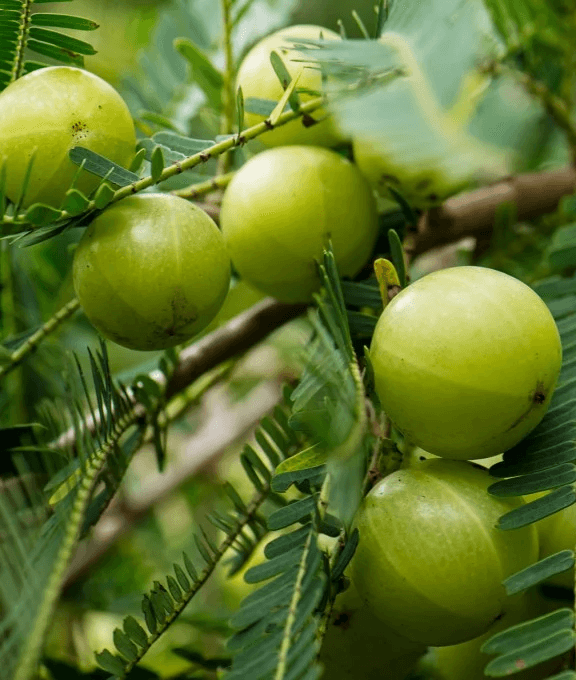- +033 2572 7171
- info@dhanvantary.com

4.5 Rating | 4500 Review

4.5 Rating | 4500 Review
Amla undeniably a powerhouse of nutrients. It is a very delicious fruit. Amla is also known as Indian Gooseberry. Amla Botanical name is Emblica Officinalis. This herb is a little fruit stuffed with versatile and miraculous health benefits. It is world’s best recognized herb and edible fruit rich in vitamin C. Amla is the best natural source of this vitamin which helps in keeping the skin healthy and strengthens the immune system of the body. It is also a very good antioxidant that can prevent ageing and rejuvenate the cellular structure keeping it young and healthy for a long time. The herb prevents our body from bacterial and viral aliments like cold and cough.

It is used in various forms because of its many health benefits. One can use it as an Amla fruit juice, Amla powder form or as a whole fresh fruit. In Ayurveda Amla is best used to make the equilibrium of three major powers of body (tridosha) i.e vata, pitta and kapha.
It belongs to Phyllanthaceae family. The Latin name of the plant is Emblica officinalis.
Kingdom
Plantae
Family
Phyllanthaceae
Order
Malpighiales
Genus
Phyllanthus
Amla is a very common plant in India. It can be easily found growing in semi – arid regions and plains of northern India. Uttar Pradesh, Tamil Nadu, Rajasthan and Madhya Pradesh are preferable subtropical area for cultivation of amla. The fruits are available from October till May during which time they are also collected and preserved in large numbers to be made available during the rest of the year.
A number of recipes and medicinal preparations of Amla are available which can always be enjoyed.
|
Hindi / Sanskrit |
English |
||
|
Rasa |
Panch Rasa |
Taste |
Sour, Sweet, Bitter, Astringent, Pungent |
|
Guna |
Guru, Sheeta |
Physical Property |
Heavy, Cool |
|
Virya |
Sheet |
Potency |
Cold |
|
Vipaka |
Madhura |
Metabolic Property (After Digestion) |
Sweet |
Amla balances all three doshas (Vata, Pitta & Kapha) in body.
|
Charak Samhita |
Sushrut Samhita |
Vagbhata |
|
Amalkyadi, Parushkadi, Triphala |
Parushkadi Ghana |
Amla Raw and dried fruit.
